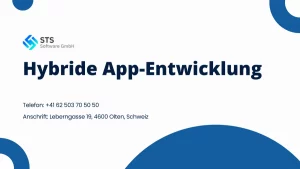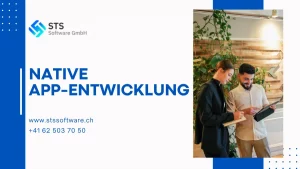I. Introduction
In an increasingly interconnected world, a business’s digital presence extends far beyond a mere representation; it embodies the core essence of its identity. Today, a website stands as more than a digital brochure; it’s the pivotal storefront, the virtual ambassador, and often the inaugural interaction point for potential clientele. It’s the canvas upon which a brand paints its story, weaving together elements of design, functionality, and user experience to craft a lasting impression. Understanding the intricate tapestry that defines web design and development costs isn’t merely a necessity; it’s a strategic imperative.
This comprehensive guide stands as a beacon amid the labyrinthine complexities of website creation. It’s a roadmap designed to untangle the myriad factors that influence costs, empowering businesses to embark on their digital journey armed with clarity and insight. By traversing these insights, businesses are poised to make discerning decisions, strategically allocating resources to optimize their investments in the digital sphere. In this age of fierce online competition, a website isn’t just an asset; it’s the cornerstone of a company’s digital identity, a testament to its commitment to innovation, functionality, and customer engagement.
II. Types of Websites
A. Simplistic Websites
Think of static websites as the digital counterpart of a traditional pamphlet. They contain fixed content that remains unchanged unless manually updated. These sites are perfect for those preferring straightforward online presence without intricate features, making them a cost-effective option for small businesses or individuals. They excel in showcasing information with minimal interaction, like portfolios, informational pages, or personal blogs. While the initial development expenses are generally lower, ongoing updates might incur additional costs.
B. Interactive Platforms
Dynamic websites act as the lively engines of the internet, utilizing server-side technologies such as PHP, ASP.NET, or Node.js. These sites offer personalized content driven by databases and user interactions. Tailored for evolving content, like news portals, social media networks, or forums, they provide users with real-time updates and engaging features. However, their advanced functionality comes with a higher development cost due to the complexities involved in managing databases, scripting, and server-side coding.
C. Online Marketplaces
E-commerce websites function as digital hubs for transactions, integrating databases for product inventories, shopping carts, secure payment gateways, and dynamic content. They offer seamless shopping experiences through product cataloging, order management, payment processing, and customer account creation. Due to their intricate nature and the need for rigorous security measures, e-commerce platforms rank among the most expensive to develop and maintain in the online realm.
D. Tailored Web Solutions
Custom web applications are bespoke solutions designed to meet specific business needs, ranging from CRM systems to project management tools. Their costs vary based on complexity, functionality, and customization depth. These applications harness cutting-edge technologies to address organizational requirements, offering unmatched functionalities and scalability. However, their development costs can rise significantly due to meticulous planning, design, and implementation phases, often involving intricate integrations and custom coding.
III. Factors Influencing Web Design Costs
Design intricacy serves as a determining factor in the cost of web design. It encompasses a multitude of elements that profoundly influence a website’s appearance, functionality, and distinctiveness.
Divergence between Basic and Tailored Designs: Basic designs, utilizing templates or off-the-shelf solutions, offer an expedited and cost-efficient route. Conversely, tailored designs are meticulously crafted to mirror a brand’s identity, involving extensive planning, innovation, and expertise. While they incur higher costs, they deliver a unique and personalized user experience.
Integration of Graphic Elements: The incorporation of top-tier graphics, animations, and branding components enriches a website’s visual allure and user interaction. However, generating or procuring these elements entails added expenses, particularly when striving for originality and superior quality.
Adaptability through Responsive Design: Navigating today’s diverse array of devices necessitates seamless user experiences across varying screen sizes. Crafting a responsive design demands extra effort and skill, contributing to heightened complexity and costs. Nevertheless, it’s an essential investment as it amplifies user satisfaction and accessibility across devices.
Functionality and Feature Integration: The functionalities and features woven into a website exert substantial influence on development costs due to their diverse complexities and technical prerequisites.
Spectrum of Basic and Advanced Functionalities: Basic functionalities encompass standard features, whereas advanced functionalities such as user accounts, intricate search capabilities, and interactive elements require sophisticated development. While enriching user engagement, these advanced features demand more resources, thereby escalating development costs.
Harmonizing CMS Integration: Selecting and integrating a content management system (CMS) involves deliberations around platform choice, customizations, licensing fees, and ongoing support. Costs fluctuate based on the CMS selected and the extent of customization essential to align with specific business requirements.
Incorporating Third-party Integrations: Infusing third-party services like payment gateways, APIs, or social media integrations can substantially heighten costs due to increased development efforts, integration complexities, and potential licensing fees. Nevertheless, these integrations often furnish pivotal functionalities that augment user experience and site performance.
Content Development and Oversight: Persuasive and pertinent content forms the bedrock of a thriving website. However, the creation and management of content entail their own set of cost considerations.
Content Creation: The caliber, quantity, and originality of textual, visual, and multimedia content bear a significant influence on costs. Developing original and captivating content tailored to the target audience necessitates expertise, time, and often external sourcing, thereby adding to expenses.
Investment in SEO Practices: Embracing Search Engine Optimization (SEO) practices is imperative for visibility and search engine rankings. SEO specialists employ diverse techniques to enhance a website’s discoverability, yet this specialized skill set incurs additional costs within the project budget.
Expertise in Copywriting and Multimedia Content: Employing professional services for copywriting and multimedia content bolsters a website’s quality and appeal. However, enlisting specialists for these tasks introduces supplementary expenses, albeit significantly enhancing the site’s overall impression and user engagement.
IV. Factors Influencing Web Development Costs
A. Technical Requirements
Web development costs are significantly impacted by the technical intricacies involved in creating a functional and user-friendly website.
Front-end Development:
Designing and implementing the user interface is a critical phase that incurs costs based on the complexity and design intricacies desired by the business. Factors such as responsiveness, interactivity, and visual appeal add layers of development effort and contribute to increased expenses.
Back-end Development:
The development of server-side functionalities, database integration, and the implementation of complex coding logic are fundamental aspects that substantially contribute to the overall development costs. These components ensure the seamless operation of the website, managing data, processing requests, and executing operations behind the scenes.
Database Integration:
Efficiently storing, managing, and retrieving data is crucial for the website’s functionality. Designing and implementing a robust database structure incurs costs during the development phase. Additionally, ongoing maintenance and optimization further contribute to long-term expenses.
B. Platform and Framework
The choice of platform and framework lays the groundwork for the website’s architecture and functionality. This decision significantly impacts the overall development expenses.
CMS Platforms:
Selecting the appropriate Content Management System (CMS) among various platforms involves considerations such as licensing fees, customization requirements, and scalability factors. Licensing costs, especially for premium CMS solutions, can be a significant part of the budget. Customization needs also add to the development expenses, depending on the level of personalization required for the site.
Custom Frameworks vs. Pre-built Solutions:
Opting for custom frameworks demands extensive resources, development time, and specialized expertise, thereby elevating costs considerably compared to pre-built solutions. Custom solutions offer flexibility but at the expense of increased development and maintenance expenses.
C. Testing and Debugging
Ensuring the website functions flawlessly across different scenarios and environments is essential but adds to the development costs.
Quality Assurance:
Conducting extensive testing and quality assurance measures to ensure a bug-free website before deployment is crucial. This phase involves various testing methods, including functional testing, performance testing, and usability testing, contributing to increased development time and costs.
Cross-browser Compatibility:
Guaranteeing compatibility across multiple browsers and devices is imperative for a seamless user experience. This requires additional development efforts, as different browsers and devices may interpret code differently, necessitating adjustments and additional testing phases.
Security Measures:
Implementing robust security features to protect against cyber threats and data breaches is non-negotiable. Incorporating encryption, firewalls, and security protocols adds to the development expenses but is crucial for safeguarding sensitive information and maintaining trust with users.
Understanding these technical aspects and their implications on development costs is essential for businesses to plan and allocate resources effectively for their web development projects.
V. Additional Cost Considerations
A. Timeline and Project Scope
When timelines are rushed or project scopes undergo frequent changes, it significantly impacts web development costs. Rushed projects often necessitate increased resources to meet deadlines, leading to additional expenses. Similarly, alterations in project scope, whether due to evolving requirements or unforeseen circumstances, often result in rework, adjustments, and the reallocation of resources. These changes can escalate costs due to extended project timelines and the need for additional developmental efforts to accommodate the modified scope.
B. Maintenance and Updates
Beyond the initial development phase, websites require ongoing maintenance, regular updates, and necessary upgrades to remain functional, secure, and aligned with evolving trends and technologies. This continuous process incurs continual expenses, often overlooked during the planning phase. Regular maintenance involves bug fixes, performance optimizations, and ensuring compatibility with the latest software updates. Ignoring these aspects can lead to functional issues, security vulnerabilities, and potential costly crises down the line.
C. Support and Training
Investing in robust customer support and training initiatives is pivotal for ensuring user satisfaction and efficient site maintenance. While it adds to the initial investment, providing comprehensive support mechanisms helps resolve user queries promptly, enhancing their experience. Additionally, conducting training sessions for administrators or content managers ensures efficient website management, reducing the chances of errors that could incur future costs. Neglecting adequate support and training could lead to increased support requests, user dissatisfaction, and higher maintenance costs due to mismanagement or errors.
VI. Conclusion
The journey through the myriad factors influencing web design and development costs unravels a complex web of considerations pivotal for businesses seeking an online presence. These insights culminate in a crucial realization: the necessity of understanding the determinants that shape cost implications in the realm of web creation. However, this understanding isn’t solely about fiscal prudence; it’s about striking an equilibrium—a delicate balance between cost-effectiveness and the relentless pursuit of quality.



